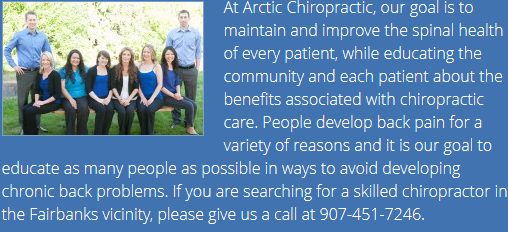Diagnosing Back Pain and Issues
The causes and symptoms of back pain and pain relief and management are such an extensive subject that there are entire medical volumes about it. Back pain is one of the most frequent causes for doctor's visits in the United States. It is estimated that 9 out of 10 people will experience some form of back pain in their lifetime. Back pain is responsible for almost half of work days missed, and is the leading cause of disability in the world.
Back pain is felt and usually originate from the bones, joints, nerves, and muscles in the spine from the neck down to the tail bone. However, it is such a complex condition that it can actually originate from and affect areas of the body such as arms and hands, legs and feet, sides, hips, and even the head. Because back pain is such a complex condition, involving so many different body parts and conditions (causes, injuries, symptoms, diagnosis, treatments, outcomes, ect.) that I have decided to concentrate on the back pain that has affected me first hand. Because of this back pain, I have had miss days from school, stay home and miss many normal activities, had to make countless trips to the doctor, and wait numerous hours in waiting rooms. My father, who was a career soldier, injured his back jumping from a helicopter during military operations. At the time of the incident he did not immediately respond to the injury other than just complaining about a twinge or jar in his lower back, or the "lumbar" area. The other three areas the spine is composed of are the "cervival" (the neck), the "thoracic" (middle back), and the "sacral spine" (the tail bone). Lumbar pain is the most common complaint of people that have experienced trauma or injury to the back. This is usually due to damage to the "synovial joints", or facet joints, of the spine. Other common injuries to this area for hyper compression of the "herniated disc" (spinal disc) and "pulled muscles" (strained muscles). There are also other non-injury causes for lower back pain, such as diseases like osteoporosis, cancer, spinal osteomyelitis, degenerative bone or disc disease, and even pregnancy. After the incident, my father was prescribed an anti-inflammatory for his discomfort and eventually began to feel better and was eventually able to resume his normal lifestyle. Unfortunately for my father, Osteoarthritis runs in his family and eventually began to reveal itself in his lumbar injury as well as others. Osteoarthritis is also known as degenerative arthritis, degenerative joint disease, or osteoarthritis. It is basically a deterioration of the cartilage or bone of the joints. People are affected by joint pain, tenderness, stiffness, locking and sometimes effusion-retaining of fluid. There are several causes for osteoarthritis, such as developmental, metabolic, and mechanical or movement related, but in my father's case it is hereditary. The leading conversation at one of my father's family reunions would be how everyone's joints hurt and how they are barely moving. I was still fairly young as my father moved into the later part of his military career, and by this time he was demonstrating clear and increased signs that he was experiencing acute (less than 12 weeks) discomfort and pain in his lower back. While most of the time he still participated in normal activities around the house and at work, there were times, even days, that he would lose his entire functionality, and would lay in bed, or on the floor, unable to move other than the most essential actions. Most doctors during this time did not reveal that he had an underlying problem other than stress, fatigue or general wear and tear. During this time, treatment prescribed for his was generally medicinal. A variation of non-steroidal anti-inflammatory drugs like Motrin, Naproxen, or paracetamol drugs like Acetaminophen/Tylenol seemed to help him with the pain; however, they did little to actually improve his condition. Since his back seemed to bother him more when the weather would get colder, he was very fond of his heat pad. Heat therapy is commonly used in the treatment of back pain and injuries as it seems to lesson spasms and help the muscles relax, reducing stress in the joints. Most heat, such as hot tubs or whirlpools, seem to work best, as well as heat wraps (wet towels heated in the microwave and wrapped or applied to the affected area). Regardless of the frequency of these incidents, exercise has always been recommended so that my father can maintain some physical condition to stay mobile and slow down the advance of his osteoarthritis, especially as he progresses into the chronic (more than 12 weeks) stages. Eventually, surgery is considered as a treatment option for people that have not responded to other common treatments; however, due to the dangers of back surgery, it is usually the last resort in treatment. Results of surgery are highly dependent on the actual condition the surgery was for with the outcome sometimes being positive, and other times have no effect.
Concerning my father, the best probable treatment option at this point and definitely in the future, as his condition becomes more severe, is his psychological and emotional attitude. Education and cognitive therapy have shown to help people by dealing with discomfort and pain and focusing on positive things go a long way in managing back pain.





 Home
Home




